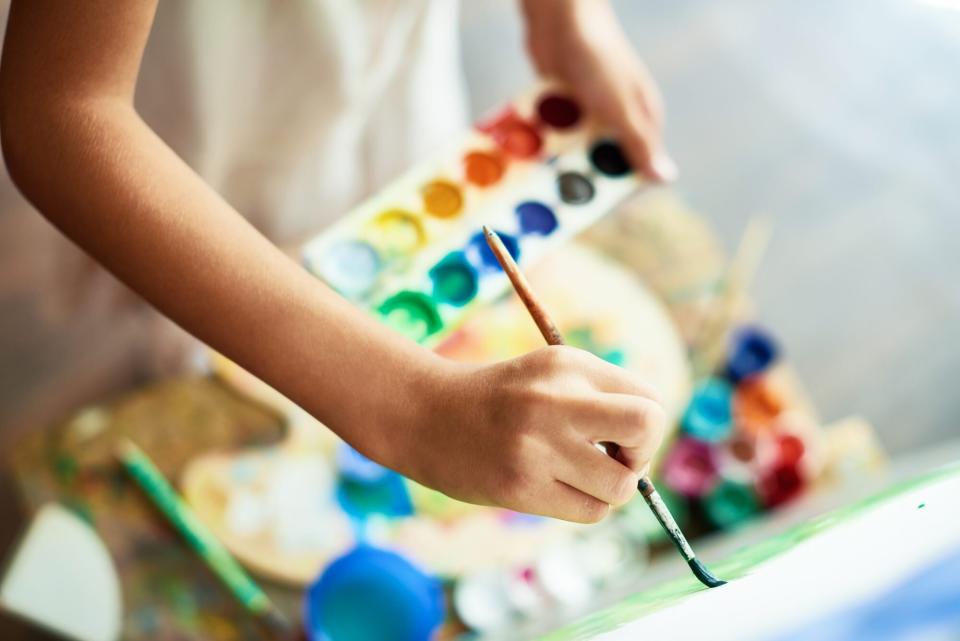Five Different Types of Painting That Every Artist Should Know
Every artist will develop their own style over time, but it is still important to experiment in a variety of mediums. Learning both modern and classic styles of painting can inform an artist's own styles and preferences. "While I do not expect artists to purchase every type of paint on the market to explore or test out, it is a good idea to get a few starter sets of, say, acrylic, gouache, oil, and watercolor. All of these paints do such different things, and it is only by testing them out that an artist can discover their own magic formula and what works best for the work they envision creating," says artist and illustrator Samantha Dion Baker, who is also the author of the upcoming title Draw Your World: How to Sketch and Paint Your Remarkable Life ($15.99, barnesandnoble.com). "Generations before us have experimented with materials, pigments, paint binders (like egg tempera, for example), varnishes, and solvents, so we must study their techniques today in order to use these different paints to their fullest potential."
Baker recommends that artists learn about the classics throughout history. These artistic movements, like Impressionism, Cubism, Neo-classicism and others, "inform and help [artists] to develop their own unique style and vision," she says. "Learning what has been created and practiced before us inspires ideas, and gives us a greater understanding of all that is possible. From scale to the shininess or thickness of paint, it all helps the artist to envision what they would like to create." In addition to techniques, artists should also try out different types of paint. So, what types of painting should every artist know?
Related: What Is Gesso? Everything You Need to Know About This Painting Essential

SeventyFour / Getty Images
Watercolor
Watercolor painting is often the first type of painting that we learn as children. This type of painting involves water-soluble paints, a paintbrush, and water, and it produces a dreamy artwork with soft edges. You can vary the intensity of the colors by the amount of water that you use, following the likes of Vincent Van Gogh and Georgia O'Keeffe who created great collections in watercolor.
Oil
Oil painting uses a drying oil instead of water for the paint. The colors tend to more opaque and can easily be scraped away or painted over in case of mistakes, although the paint also takes longer to dry. And, if you seek to achieve vivid or dark colors and stronger edges, then oil painting will produce those effects. Famous artists who used oil paints include Salvador Dali, known for The Persistence of Memory (1931), and Johannes Vermeer, who painted Girl With A Pearl Earring (1665).
Acrylic
Acrylic paints, which have acrylic polymers and plasticizers as the binding agent for the pigments, are versatile in the results that you can achieve. Add more water for a watercolor look or add acrylic gels or pastes to create an oil-painted appearance. You can change the consistency to suit your needs and come up with different combinations that make your piece unique; that said, it's less forgiving in mistakes. Andy Warhol used acrylics to create his famous works like the Campbell's Soup Cans (1962).
Gouache
Gouache paints are like opaque watercolors, offering the possibility to create soft or textured paintings for a wide range of techniques. The paints are made from pigments, water, and gum arabic. It dries quickly but can be reactivated with more water; this type of paint dries matte and is a heavier paint due to the chalk that's incorporated into it.
Pastel
Pastel painting involves using pastels, either oil pastels or soft pastels, to create paintings. Unlike watercolor or acrylic or oil paints, these come in the form of sticks and you can draw and color with them with the precision of a pencil—no paint brush required. Mary Cassatt's famous painting Sleepy Baby (1910) was done in pastels.

